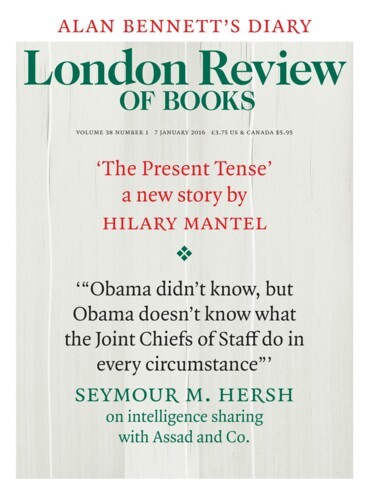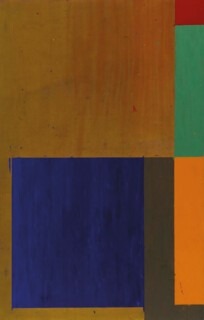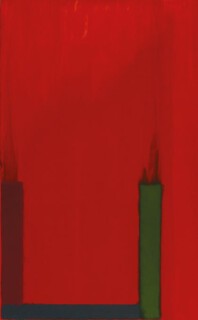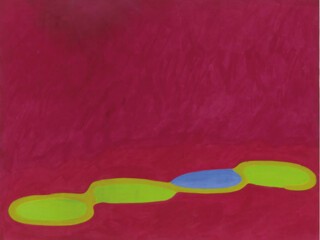Politeness is overrated, I thought as I walked through the Newport Street Gallery in early December. The vast new free-to-enter exhibition space in Vauxhall was established by Damien Hirst, a virtuoso of bad manners, for his private collection of modern art. Hirst’s own artistic career has been an occasionally exhilarating, frequently depressing, but always impenitent assault on the pieties, vested interests and claims to immortality of contemporary art. Yes, the subjects of his best work were agents and vessels of death – preserved flesh, pharmaceuticals, surgical instruments, cigarettes – but his greatest affront to good taste was his unembarrassed embrace of neoliberal capitalism. In an era of gross inequality he made his money by outsourcing production, globalising his consumer base, and manipulating selected markets.
All of which makes Hirst’s reinvention of himself as a kind-hearted philanthropist surprising. Is he trying to flatter posterity? That’s the impression he gives and it’s reinforced by the site he has chosen: a Victorian industrial terrace converted by Caruso St John (who also renovated Tate Britain, the V&A Museum of Childhood and the Gagosian in Britannia Street) into a series of light-filled rooms across two floors linked by three glorious oval staircases. The inaugural exhibition (until 3 April) is dedicated to paintings by John Hoyland, a neglected British abstract artist whose work courts the same ideals of high art that his patron’s career seemed intended to destroy.
Hoyland first came to prominence in the 1960s as a young man whose paintings didn’t disguise his disdain for the British tradition or cloak the awe with which he regarded New York’s generation of post-war abstractionists: Barnett Newman, Rothko, Hans Hofmann and Motherwell chief among them. A Yorkshireman like Hirst, Hoyland also knew scandal early: his abstract work was initially removed from the 1960 graduate exhibition at the Royal Academy Schools, then restored when the school’s director was shown Hoyland’s landscapes – proof he knew how to paint.
The early works on display here make it easy to see why Hoyland became the foremost British representative of the new style. Geometrical forms are cleverly organised within the vast canvases, which still possess an aura comparable to that of their creator’s idols. In 17.5.64 and 9.11.68 clear, bright planes of colour threaten to break the bounds of the canvas. That pressure is intensified in other paintings, such as 12.6.66 and 17.1.69, where narrow bands appear at the edges of the frame, showing off Hoyland’s feel for the dynamics of painting in a large format. They are everything paintings of the high modernist, postwar, Greenbergian avant-garde should be: concerned purely with the sort of overwhelming sensual experience only non-figurative painting can create, an experience utterly removed from our everyday visual life. Painting, in other words, for painting’s sake.
Yet the dates in the titles of these works hint at the fragility of Hoyland’s reputation. By the early 1960s, new movements had begun to overtake lyrical abstraction. Hoyland, for all that his work seemed new to the British art establishment, had arrived too late. Between the omnivorousness of Pop on one side and the rigour of Minimalism on the other, Hoyland’s romanticism soon felt dated, and by the late 1970s he was a straw man new critics such as Peter Fuller could use to attack the conservatism of British art.
Hoyland’s struggles to find a new direction are apparent in the variety of his experiments in colour and texture. The excellence of his eye means that even in the least convincing mid-career works, which abandon the early experiments with form for a loose, messy expressionism, the combination of impasto smears and thin stains often bursts into life. But he is rarely able to maintain the effect over a whole canvas. That these works resemble the early abstraction of Philip Guston only reminds the viewer that by this time Guston had moved on to the late, frightening, figurative style that would do so much to revitalise painting. Later work shows Hoyland making progress on his own terms. The consistent feature of his best work – stacked, flat planes of colour – now appear in a rich palette of deep blues, soft pastels and sharp, insistent reds. For all this final access of energy, the lasting impression is of a talented painter who never found his moment. The show concludes in 1982 with the painter (who died in 2011) still two years younger than Hirst is now.
The question remains: why should Hirst launch his new venture with a neglected British painter whose ideas about art seem opposed to his own? It is said that Hirst’s mission is sentimental: the unjustly overlooked Hoyland inspired him as a young man and became a friend in later life. Another interpretation is that the gallery provides Hirst – the value of whose work has been in decline since the spectacular provocation of his 2008 auction at Sotheby’s – with a way of managing his reputation and, by extension, propping up the market for his work. Exhibiting his collection can only drive up its value, and Hoyland’s graceful compositions are a saleable proposition at a time when prices for 20th-century painterly abstraction are approaching the stratospheric.
Hoyland was one of the first at the tail end of the materialistic 1990s to break rank and criticise Hirst for neglecting his art in favour of ‘becoming an entrepreneur’. And so how odd that Hoyland and Hirst should now be joined in this venture in which the resuscitation of the romantic’s reputation depends on the cynic’s entry into the respectable business of running a gallery.
Send Letters To:
The Editor
London Review of Books,
28 Little Russell Street
London, WC1A 2HN
letters@lrb.co.uk
Please include name, address, and a telephone number.




